Are you wondering if Bhubaneswar Tourism is worth your time and money? Absolutely! Bhubaneswar, the “Temple City” of India, offers a rich tapestry of ancient history, stunning architecture, and vibrant culture, making it an unmissable destination for travelers seeking authentic experiences. For a seamless exploration of India, consider SIXT.VN for reliable transportation and travel advice.
Table of Contents
- Why is Bhubaneswar Called the Temple City?
- What are the Must-Visit Temples in Bhubaneswar?
- What Other Historical Sites Can I Explore in Bhubaneswar?
- Are There Any Museums Worth Visiting in Bhubaneswar?
- What Natural Attractions Surround Bhubaneswar?
- How Can I Get to Bhubaneswar?
- What is the Best Time to Visit Bhubaneswar?
- Where Can I Stay in Bhubaneswar?
- What Local Cuisine Should I Try in Bhubaneswar?
- Is Bhubaneswar a Safe City for Tourists?
- Frequently Asked Questions About Bhubaneswar Tourism
1. Why is Bhubaneswar Called the Temple City?
Bhubaneswar is called the “Temple City” because it was once home to over 7000 temples. While many have been lost to time, the city still boasts a remarkable collection of ancient temples, showcasing the rich architectural heritage of the Kalinga dynasty. These temples are not just places of worship but also magnificent works of art, adorned with intricate carvings and sculptures that depict various aspects of Hindu mythology and daily life. According to the Odisha Tourism Department, Bhubaneswar continues to be a significant center for religious tourism, attracting devotees and history enthusiasts alike.
1.1 The Historical Significance of Bhubaneswar’s Temples
The temples of Bhubaneswar represent a unique blend of architectural styles, primarily the Kalinga style, which is characterized by its distinctive curvilinear towers and intricate carvings. These structures provide valuable insights into the religious, social, and artistic traditions of the region. Research from the Archaeological Survey of India highlights that many of these temples were built between the 7th and 13th centuries, reflecting the peak of temple-building activity in Odisha.
1.2 Key Deities and Temple Architecture
The temples in Bhubaneswar are dedicated to various deities, with Lord Shiva being the most prominent. The Lingaraj Temple, for example, is dedicated to Harihara, a combined form of Vishnu and Shiva. The architecture of these temples typically includes a sanctum (deula), a hall for devotees (jagamohana), a dance hall (natamandira), and a treasury (bhoga-mandapa). This layout reflects the integrated nature of religious and social life in ancient Odisha.
1.3 The Cultural Impact of Temple City
The “Temple City” moniker not only emphasizes the architectural grandeur of Bhubaneswar but also its cultural significance. The temples serve as venues for various festivals and rituals, preserving traditional practices and fostering a sense of community. According to a study by the Indian National Trust for Art and Cultural Heritage (INTACH), these temples play a crucial role in maintaining the cultural identity of Bhubaneswar.
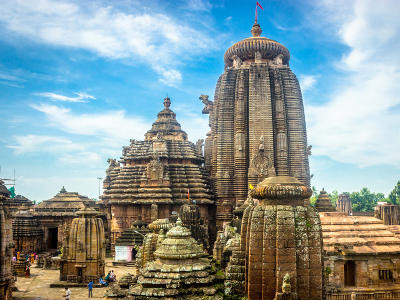 Lingaraj Temple Bhubaneswar Odisha
Lingaraj Temple Bhubaneswar Odisha
2. What are the Must-Visit Temples in Bhubaneswar?
Bhubaneswar offers an array of magnificent temples, each with its unique history and architectural style. Don’t miss the Lingaraj Temple, the largest and most prominent temple in the city, dedicated to Lord Harihara. Other notable temples include the Mukteshwar Temple, known for its exquisite stone archway, and the Rajarani Temple, famed for its intricately sculpted figures. These sacred sites offer a glimpse into Odisha’s rich cultural and religious heritage. SIXT.VN can help you arrange guided tours to these temples, ensuring a comprehensive and enriching experience.
2.1 Lingaraj Temple: The Jewel of Bhubaneswar
The Lingaraj Temple is undoubtedly the most iconic temple in Bhubaneswar. Built in the 11th century, this temple is dedicated to Lord Harihara, a combined form of Lord Shiva and Lord Vishnu. The temple’s towering spire, intricate carvings, and sprawling complex make it a must-visit destination for anyone interested in Hindu architecture and religious traditions.
- Key Features: The temple complex includes numerous smaller shrines, a sacred tank, and intricately carved sculptures depicting various deities and mythological scenes.
- Festivals: The Chandan Yatra and Ratha Yatra are celebrated with great fervor at the Lingaraj Temple, attracting thousands of devotees.
2.2 Mukteshwar Temple: The Gem of Kalinga Architecture
The Mukteshwar Temple, built in the 10th century, is renowned for its elegant stone archway (torana), which is considered a masterpiece of Kalinga architecture. The temple’s intricate carvings and delicate sculptures showcase the artistic brilliance of the era.
- Key Features: The ornate archway, the intricate carvings on the temple walls, and the serene atmosphere make it a unique and captivating site.
- Historical Significance: The temple represents a transitional phase in Kalinga architecture, blending early and later styles.
2.3 Rajarani Temple: The Temple of Love
The Rajarani Temple, dating back to the 11th century, is famous for its sculpted figures and graceful spire. The temple’s name, which translates to “love queen,” adds to its romantic allure.
- Key Features: The temple’s spire, reminiscent of the temples of Khajuraho, and the intricate carvings of dikpalas (guardians of the directions) are particularly noteworthy.
- Architectural Style: The temple showcases a refined example of Kalinga architecture, with its elegant proportions and detailed ornamentation.
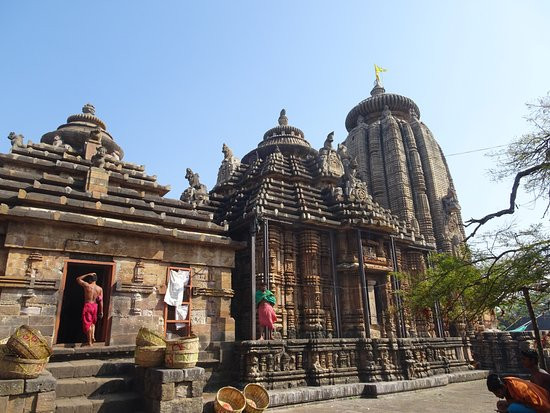 Ananta Vasudeva Temple Bhubaneswar Odisha
Ananta Vasudeva Temple Bhubaneswar Odisha
2.4 Other Notable Temples
- Parasurameswara Temple: One of the oldest existing temples in Bhubaneswar, dating back to the 7th-8th centuries AD.
- Brahmeswara Temple: Built in the 9th century AD, dedicated to Lord Shiva and showcasing Kalinga style architecture.
- Vaital Temple: An 8th-century construction known for its delicate carvings and Tantric influences.
- Ananta Vasudeva Temple: A 13th-century temple dedicated to Lord Krishna, Lord Balarama, and Goddess Subhadra.
3. What Other Historical Sites Can I Explore in Bhubaneswar?
Beyond temples, Bhubaneswar offers a wealth of historical sites that reflect its diverse past. Explore the Udayagiri and Khandagiri Caves, ancient rock-cut caves that once served as Jain monasteries. Visit Dhauli Giri, also known as Peace Pagoda, a Buddhist monument commemorating Emperor Ashoka’s transformation. These sites provide a fascinating glimpse into the region’s religious and cultural evolution. SIXT.VN can arrange transportation and guided tours to these historical landmarks.
3.1 Udayagiri and Khandagiri Caves: Ancient Rock-Cut Marvels
The Udayagiri and Khandagiri Caves, located a short distance from Bhubaneswar, are ancient rock-cut caves that date back to the 2nd century BCE. These caves were carved out of sandstone hills and served as Jain monasteries, providing shelter and meditation spaces for monks.
- Udayagiri: This hill has 18 caves, including the famous Rani Gumpha (Queen’s Cave), which features intricate carvings and sculptures.
- Khandagiri: This hill has 15 caves, some of which contain inscriptions and relief sculptures depicting Jain religious symbols.
3.2 Dhauli Giri: The Peace Pagoda
Dhauli Giri, also known as the Peace Pagoda, is a Buddhist monument built in 1972 through a collaboration between Japan and India. The site is significant because it is believed to be the location where Emperor Ashoka, after witnessing the devastation of the Kalinga War, embraced Buddhism and renounced violence.
- Key Features: The pagoda features panels depicting various scenes from the life of Buddha, as well as Ashoka’s conversion to Buddhism.
- Historical Significance: The site represents a turning point in Indian history, marking the spread of Buddhism and the adoption of non-violent principles.
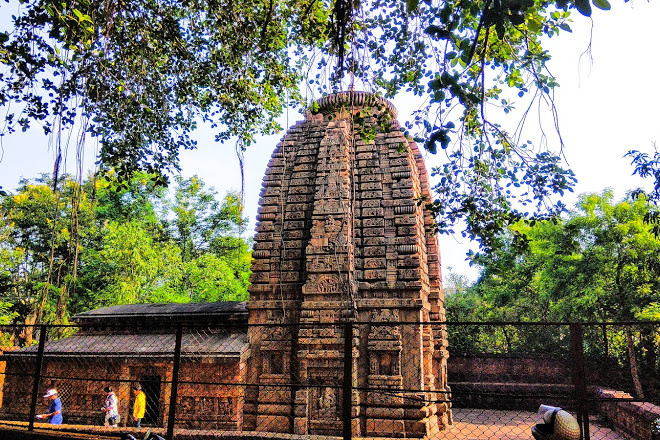 Parsurameswar Temple Bhubaneswar Odisha
Parsurameswar Temple Bhubaneswar Odisha
3.3 Bindu Sagar: The Sacred Lake
Bindu Sagar is a sacred lake located near the Lingaraj Temple. According to legend, the lake contains water from all the holy rivers of India, making it a particularly auspicious site for pilgrims.
- Religious Significance: Devotees often take a dip in the lake before visiting the Lingaraj Temple, believing that it will cleanse them of their sins.
- Scenic Beauty: The lake is surrounded by temples and gardens, offering a serene and picturesque setting.
4. Are There Any Museums Worth Visiting in Bhubaneswar?
Yes, Bhubaneswar has several museums that showcase the region’s rich history, art, and culture. The Odisha State Museum is a treasure trove of archaeological findings, including sculptures, coins, and inscriptions from ancient Kalinga. The Museum of Tribal Art and Artefacts offers insights into the lives of Odisha’s tribal communities, with displays of traditional costumes, jewelry, and tools. These museums provide a comprehensive understanding of Odisha’s cultural heritage. SIXT.VN can assist you in planning your museum visits.
4.1 Odisha State Museum: A Repository of History
The Odisha State Museum is one of the oldest and largest museums in Odisha, housing a vast collection of artifacts that span from ancient times to the present day.
- Collections: The museum’s collections include sculptures, coins, inscriptions, textiles, traditional musical instruments, and anthropological exhibits.
- Highlights: The museum’s archaeological section features artifacts from the Mauryan, Gupta, and Kalinga periods, providing a comprehensive overview of Odisha’s history.
4.2 Museum of Tribal Art and Artefacts: A Glimpse into Tribal Life
The Museum of Tribal Art and Artefacts is dedicated to preserving and showcasing the cultural heritage of Odisha’s tribal communities. The museum’s exhibits include traditional costumes, jewelry, tools, weapons, and ritual objects.
- Exhibits: The museum features displays on the life and customs of Odisha’s 62 tribes, providing insights into their unique traditions and way of life.
- Educational Value: The museum serves as an educational resource, promoting awareness and appreciation of tribal cultures.
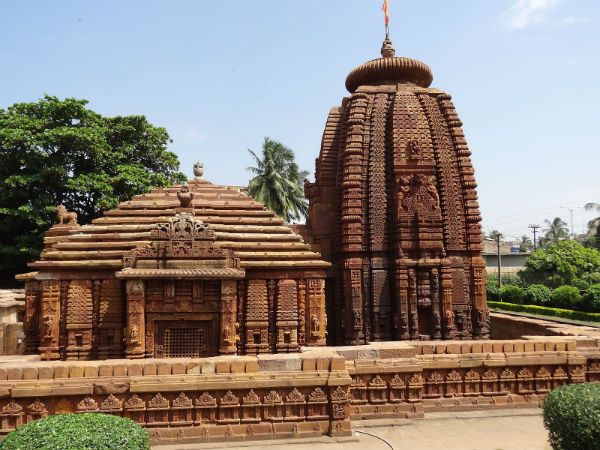 Mukteshwar Temple Bhubaneswar Odisha
Mukteshwar Temple Bhubaneswar Odisha
4.3 Other Museums and Galleries
- Pathani Samanta Planetarium: A planetarium dedicated to promoting awareness of astronomy and space science.
- Regional Science Centre: An interactive science museum offering exhibits and activities for children and adults.
- Kala Bhoomi – Odisha Crafts Museum: Showcasing the traditional crafts of Odisha, including textiles, pottery, and metalwork.
5. What Natural Attractions Surround Bhubaneswar?
Bhubaneswar is not only rich in historical and cultural attractions but also surrounded by natural beauty. Visit Nandankanan Zoological Park, a renowned zoo and botanical garden that is home to a variety of animals, including white tigers. Explore Ekamra Kanan, a sprawling park with a lake, rose gardens, and boating facilities. These natural attractions offer a refreshing break from the city’s historical sites. SIXT.VN can arrange transportation to these natural destinations.
5.1 Nandankanan Zoological Park: The Garden of Heaven
Nandankanan Zoological Park, which translates to “The Garden of Heaven,” is one of the largest and most popular zoos in India. The park is home to a diverse collection of animals, including white tigers, lions, elephants, and various species of birds and reptiles.
- Key Attractions: The zoo is known for its successful breeding programs, particularly for white tigers, which are a major attraction.
- Botanical Garden: The park also includes a botanical garden, featuring a wide variety of plants and trees.
5.2 Ekamra Kanan: A Green Oasis
Ekamra Kanan is a large park located in Bhubaneswar, offering a green oasis for relaxation and recreation. The park features a lake, rose gardens, a nursery, and boating facilities.
- Recreational Activities: Visitors can enjoy boating on the lake, strolling through the rose gardens, or relaxing in the park’s peaceful surroundings.
- Family-Friendly: The park also includes playgrounds and picnic areas, making it a popular destination for families.
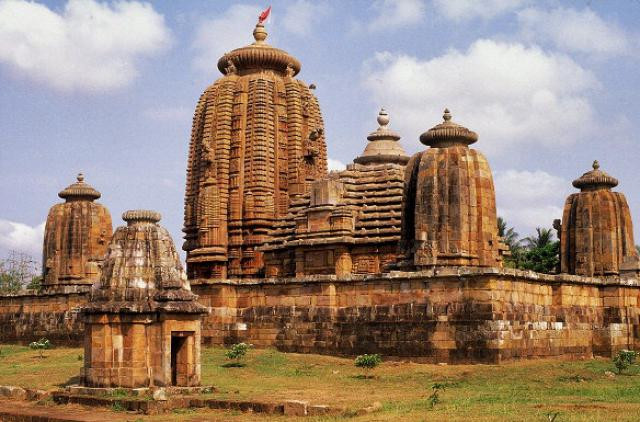 Brahmeswara Temple Bhubaneswar Odisha
Brahmeswara Temple Bhubaneswar Odisha
5.3 Other Natural Attractions
- Chandaka Elephant Reserve: A wildlife sanctuary that is home to elephants and other animals.
- Atri Hot Springs: A natural hot spring known for its therapeutic properties.
- Botanical Survey of India Garden: A botanical garden featuring a collection of rare and endangered plants.
6. How Can I Get to Bhubaneswar?
Bhubaneswar is well-connected to the rest of India and the world through air, rail, and road. The Biju Patnaik International Airport offers flights to major Indian and international cities. The Bhubaneswar Railway Station is a major railhead connecting the city to various parts of India. A network of highways and bus services also connects Bhubaneswar to neighboring cities and states. SIXT.VN provides airport transfer and car rental services for convenient transportation within the city.
6.1 By Air: Biju Patnaik International Airport
Biju Patnaik International Airport is the primary airport serving Bhubaneswar, offering flights to major Indian cities such as Delhi, Mumbai, Kolkata, Chennai, and Hyderabad, as well as international destinations.
- Airlines: Major airlines operating at the airport include Air India, IndiGo, SpiceJet, and Vistara.
- Connectivity: The airport is well-connected to the city center, with taxis, buses, and car rental services available.
6.2 By Rail: Bhubaneswar Railway Station
Bhubaneswar Railway Station is a major railhead, connecting the city to various parts of India. Regular trains are available from major cities such as Delhi, Mumbai, Kolkata, Chennai, and Bangalore.
- Train Services: The station offers a variety of train services, including express trains, superfast trains, and passenger trains.
- Transportation: From the station, you can hire taxis, auto-rickshaws, or buses to reach your destination in the city.
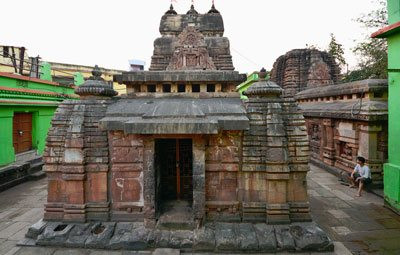 Vaital Temple Bhubaneswar Odisha
Vaital Temple Bhubaneswar Odisha
6.3 By Road: Bus and Highway Network
Bhubaneswar is well-connected to neighboring cities and states through a network of highways and bus services. The Odisha State Road Transport Corporation (OSRTC) operates regular bus services to various destinations.
- Bus Services: Private bus operators also offer services to major cities in the region.
- Highway Connectivity: The city is connected to the National Highway network, making it accessible by car and bus from various parts of India.
7. What is the Best Time to Visit Bhubaneswar?
The best time to visit Bhubaneswar is during the winter months, from October to March. The weather is pleasant during this period, with temperatures ranging from 15°C to 30°C, making it ideal for sightseeing and outdoor activities. The summer months (April to June) can be hot and humid, while the monsoon season (July to September) brings heavy rainfall. SIXT.VN can help you plan your visit according to the best weather conditions.
7.1 Winter Season (October to March)
The winter season is the most popular time to visit Bhubaneswar, thanks to its pleasant weather and clear skies. This is the ideal time for exploring the city’s temples, historical sites, and natural attractions.
- Ideal Weather: The temperature ranges from 15°C to 30°C, making it comfortable for outdoor activities.
- Festivals: Several festivals are celebrated during this period, adding to the cultural experience.
7.2 Summer Season (April to June)
The summer months can be hot and humid, with temperatures often exceeding 40°C. This is not the best time to visit Bhubaneswar, as the heat can make sightseeing uncomfortable.
- High Temperatures: The temperature can reach up to 45°C, making it difficult to engage in outdoor activities.
- Heat Waves: The region is prone to heat waves during this period, which can pose health risks.
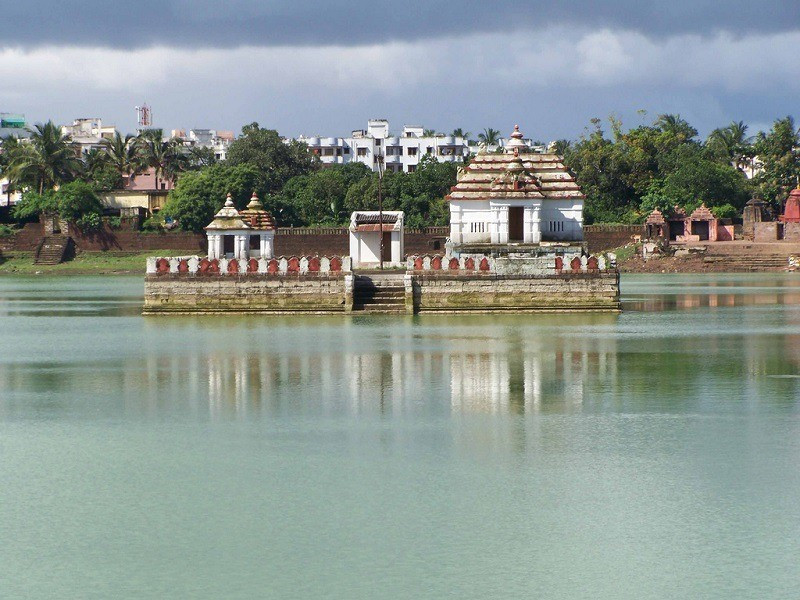 Bindu Sagar Bhubaneswar Odisha
Bindu Sagar Bhubaneswar Odisha
7.3 Monsoon Season (July to September)
The monsoon season brings heavy rainfall to Bhubaneswar, which can disrupt travel plans and make it difficult to explore the city. However, the rain also brings relief from the summer heat and transforms the landscape into a lush green paradise.
- Heavy Rainfall: The region receives heavy rainfall during this period, which can lead to flooding and transportation disruptions.
- Greenery: The landscape becomes lush and green, making it a scenic time to visit if you don’t mind the rain.
8. Where Can I Stay in Bhubaneswar?
Bhubaneswar offers a range of accommodation options to suit different budgets and preferences. You can choose from luxury hotels, budget guesthouses, and serviced apartments. Popular areas to stay include the city center, near the airport, and close to the major temples. SIXT.VN can assist you in finding the perfect accommodation for your stay.
8.1 Luxury Hotels
Bhubaneswar has several luxury hotels that offer world-class amenities and services. These hotels are ideal for travelers looking for a comfortable and convenient stay.
- Mayfair Lagoon: A luxury hotel known for its elegant rooms, beautiful gardens, and excellent dining options.
- The Crown: A stylish hotel offering modern amenities and a central location.
8.2 Budget Guesthouses
For budget-conscious travelers, Bhubaneswar offers a range of guesthouses and budget hotels that provide comfortable accommodation at affordable prices.
- Hotel Swosti Premium: A mid-range hotel offering comfortable rooms and convenient amenities.
- Hotel Hindustan International: A budget-friendly option with clean rooms and a central location.
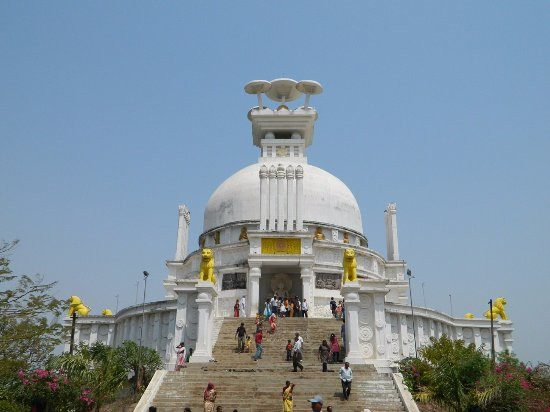 Dhauli Giri Shanti Stupa Bhubaneswar Odisha
Dhauli Giri Shanti Stupa Bhubaneswar Odisha
8.3 Serviced Apartments
Serviced apartments are a good option for travelers looking for more space and privacy. These apartments offer amenities such as a kitchen, living room, and laundry facilities.
- The Residency: A serviced apartment complex offering comfortable and well-equipped apartments.
- Corporate Inn: A popular choice for business travelers, offering a range of serviced apartments with modern amenities.
9. What Local Cuisine Should I Try in Bhubaneswar?
Bhubaneswar is a food lover’s paradise, offering a variety of delicious and unique dishes. Be sure to try the local specialties, such as Dalma, a lentil and vegetable stew; Macha Ghanta, a fish head curry; and Chhena Poda, a baked cheese dessert. Street food is also popular, with vendors selling a variety of snacks and sweets. SIXT.VN can recommend the best restaurants and street food stalls in the city.
9.1 Dalma: The Heart of Odia Cuisine
Dalma is a traditional Odia dish made with lentils, vegetables, and spices. It is a staple food in Odisha and is often served with rice or roti.
- Ingredients: The dish typically includes lentils, pumpkin, eggplant, potatoes, and other vegetables, seasoned with spices such as cumin, coriander, and ginger.
- Nutritional Value: Dalma is a nutritious and wholesome dish, providing a good source of protein, fiber, and vitamins.
9.2 Macha Ghanta: A Fish Head Delicacy
Macha Ghanta is a flavorful fish head curry that is a popular delicacy in Odisha. The dish is made with the head of a fish, cooked in a rich and spicy gravy.
- Preparation: The fish head is marinated in spices and then cooked with onions, tomatoes, ginger, garlic, and other aromatic ingredients.
- Taste: Macha Ghanta has a rich and savory flavor, with a hint of spice.
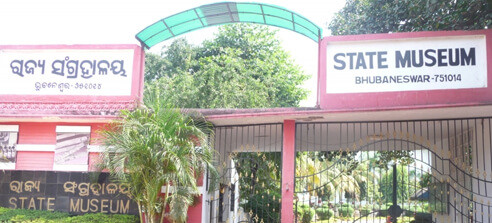 Odisha State Museum Bhubaneswar Odisha
Odisha State Museum Bhubaneswar Odisha
9.3 Chhena Poda: Odisha’s Signature Dessert
Chhena Poda is a baked cheese dessert that is considered the signature sweet of Odisha. The dessert is made with fresh cheese, sugar, and cardamom, and is baked until it develops a caramelized crust.
- Ingredients: The main ingredients are fresh cheese (chhena), sugar, and cardamom.
- Texture: Chhena Poda has a unique texture, with a soft and crumbly interior and a slightly crispy exterior.
10. Is Bhubaneswar a Safe City for Tourists?
Yes, Bhubaneswar is generally considered a safe city for tourists. However, it is always advisable to take precautions to protect yourself from petty theft and scams. Avoid walking alone at night in poorly lit areas, and be aware of your surroundings. It is also a good idea to keep your valuables in a safe place and to avoid displaying expensive jewelry or electronics. SIXT.VN provides reliable and safe transportation services, ensuring a secure travel experience.
10.1 General Safety Tips
- Be Aware of Your Surroundings: Pay attention to your surroundings and avoid walking alone in poorly lit areas, especially at night.
- Protect Your Valuables: Keep your valuables in a safe place, such as a hotel safe, and avoid displaying expensive jewelry or electronics.
- Avoid Scams: Be wary of scams and overcharging, especially in tourist areas.
10.2 Transportation Safety
- Use Reputable Transportation: Use reputable transportation services, such as taxis or car rental companies, to ensure a safe and reliable travel experience.
- Avoid Overcrowded Public Transportation: Avoid using overcrowded public transportation, as it can be a breeding ground for pickpockets.
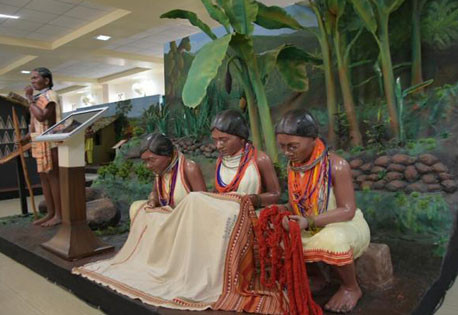 Odisha Tribal Museum
Odisha Tribal Museum
10.3 Health Precautions
- Drink Bottled Water: Drink bottled water to avoid waterborne diseases.
- Eat at Reputable Restaurants: Eat at reputable restaurants to avoid food poisoning.
- Consult a Doctor: Consult a doctor before traveling to Bhubaneswar to get necessary vaccinations and health advice.
11. Frequently Asked Questions About Bhubaneswar Tourism
Here are some frequently asked questions about planning a trip to Bhubaneswar:
11.1 What is Bhubaneswar famous for?
Bhubaneswar is famous for its ancient temples, which showcase the rich architectural heritage of the Kalinga dynasty. It is also known for its museums, natural attractions, and delicious local cuisine.
11.2 How many days are enough for Bhubaneswar?
A 3-4 day trip is usually sufficient to explore the major attractions in Bhubaneswar, including the temples, museums, and natural sites.
11.3 What is the best way to get around Bhubaneswar?
The best way to get around Bhubaneswar is by hiring a taxi or renting a car. Auto-rickshaws are also available, but it is important to negotiate the fare before starting your journey.
11.4 Is Bhubaneswar expensive to visit?
Bhubaneswar is a relatively affordable city to visit, with accommodation, food, and transportation options to suit different budgets.
11.5 What are the top things to do in Bhubaneswar?
Top things to do in Bhubaneswar include visiting the Lingaraj Temple, exploring the Udayagiri and Khandagiri Caves, visiting the Odisha State Museum, and enjoying the natural beauty of Nandankanan Zoological Park.
11.6 What is the local language spoken in Bhubaneswar?
The local language spoken in Bhubaneswar is Odia. However, English and Hindi are also widely spoken.
11.7 Are credit cards widely accepted in Bhubaneswar?
Credit cards are accepted in most hotels, restaurants, and shops in Bhubaneswar. However, it is always a good idea to carry some cash for smaller establishments and local markets.
11.8 What is the currency used in Bhubaneswar?
The currency used in Bhubaneswar is the Indian Rupee (INR).
11.9 What type of clothing should I pack for Bhubaneswar?
Pack light and comfortable clothing for Bhubaneswar, especially if you are visiting during the summer months. It is also a good idea to pack modest clothing for visiting temples and religious sites.
11.10 Are there any travel restrictions or advisories for Bhubaneswar?
Check with your country’s embassy or consulate for any travel restrictions or advisories before planning your trip to Bhubaneswar.
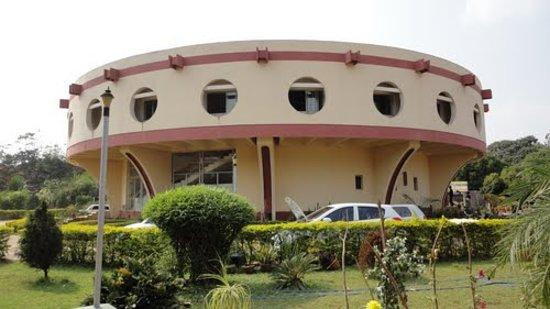 Pathani Samanta Planetarium Bhubaneswar Odisha
Pathani Samanta Planetarium Bhubaneswar Odisha
Ready to experience the magic of Bhubaneswar? Let SIXT.VN be your trusted partner in planning an unforgettable journey. From convenient airport transfers and comfortable accommodations to expertly guided tours, we provide everything you need for a seamless and enriching travel experience. Contact us today and let us help you discover the treasures of the “Temple City” and beyond. Address: 260 Cau Giay, Hanoi, Vietnam. Hotline/Whatsapp: +84 986 244 358. Visit our website: SIXT.VN.



